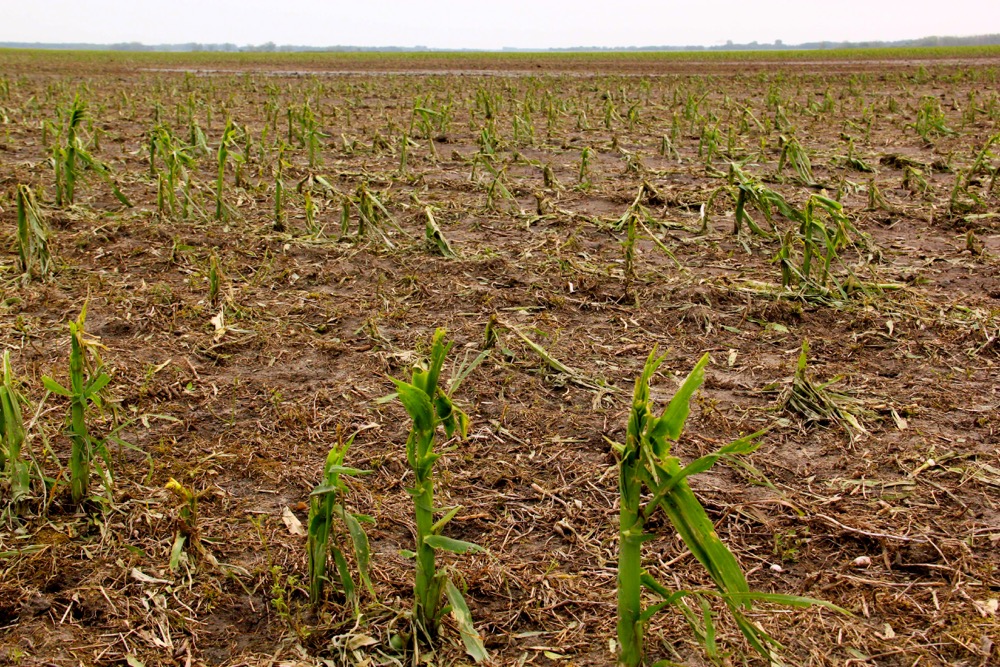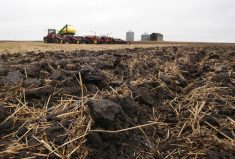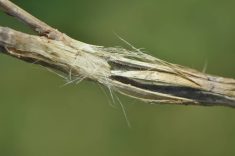Crop insurance officials were still assessing the damage Monday caused by a vicious hail storm that hit the Roseisle-Miami area the afternoon of June 27.
As of noon Monday the Manitoba Agricultural Services Corporation (MASC) had received around 100 claims province-wide, David Van Deynze, MASC’s manager of claim services said in an interview. About half the claims came into MASC’s Carman office, while most of the rest came from Somerset and Altona — the next nearest offices, he said.
“Usually what you get by noon the first day is about half of what you’ll get in all,” Van Deynze said. “I haven’t been briefed yet by our adjusters but obviously from the news coverage it suggests at least some acres were pretty badly beaten up if not totally gone.”
The earlier a crop is damaged by hail the more hope there is that it might recover, Van Deynze said. However, sometimes crops are outright destroyed.
Some crops, such as canola, recover from hail better than soybeans.

No matter the crop if it was heavily damaged at the seed setting stage there’s little chance of it recovering, he added.
“If you had a winter wheat field smoked (now by hail) I’m almost sure we’d be writing that off because winter wheat has long been headed and the chance of it coming back is not really there,” Van Deynze said. “But a spring wheat field planted in early June there’s a chance (depending on the severity of the damage) we’re not going to write that off.”
Farmers complain by not being allowed to work up damaged fields their fertilizer is going to waste, but MASC counters it has a fiduciary responsibility to the crop insurance program.
Read Also

Precision 4R cuts farm greenhouse gas emissions
Lower areas in your field tend to emit more greenhouse gas, research shows that precision 4R nutrient stewardship practices can help mute the trend
As for farmers’ nutrients, leaving the damaged crop until fall is the best way to protect them from escaping into the environment, said John Heard, soil fertility specialist with Manitoba Agriculture, Food and Rural Development.
“I’d go as far to say farmers who rip up their crops now should have to seed a cover crop to protect their nutrients,” he added.
Crops worked up this fall will slowly release nutrients to subsequent crops, he said.




















